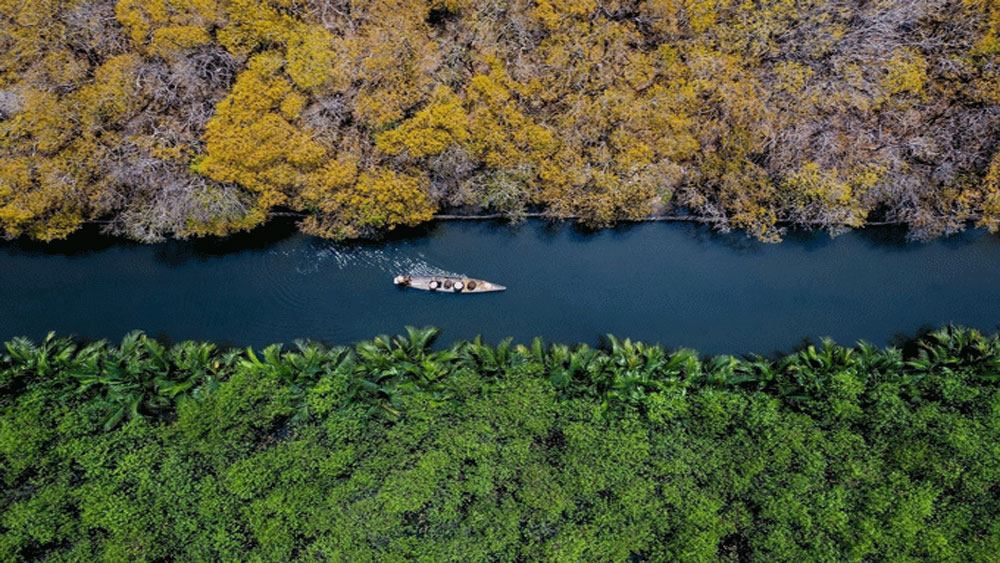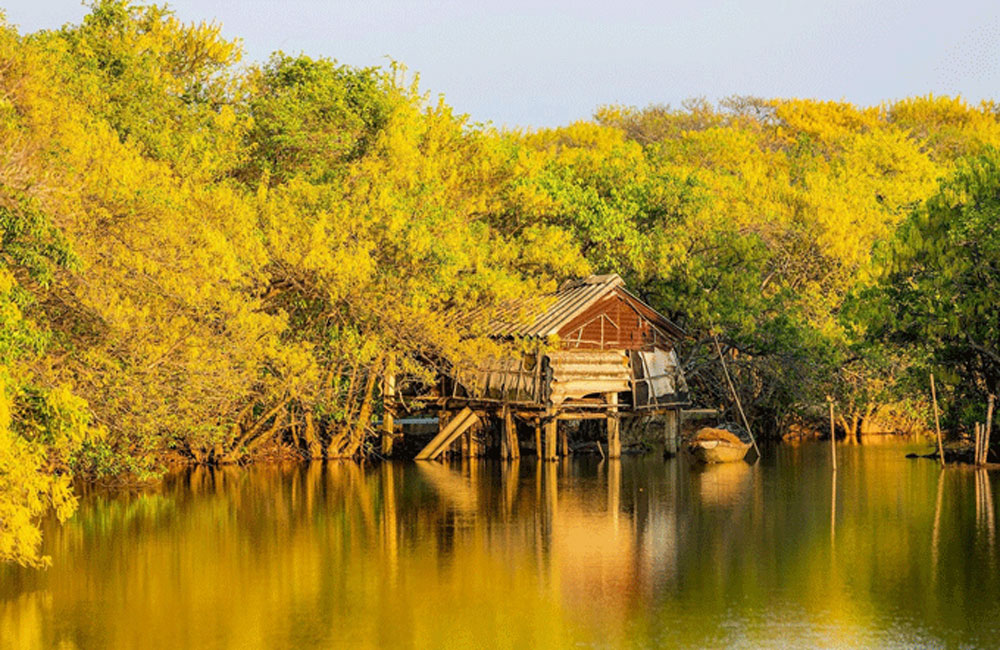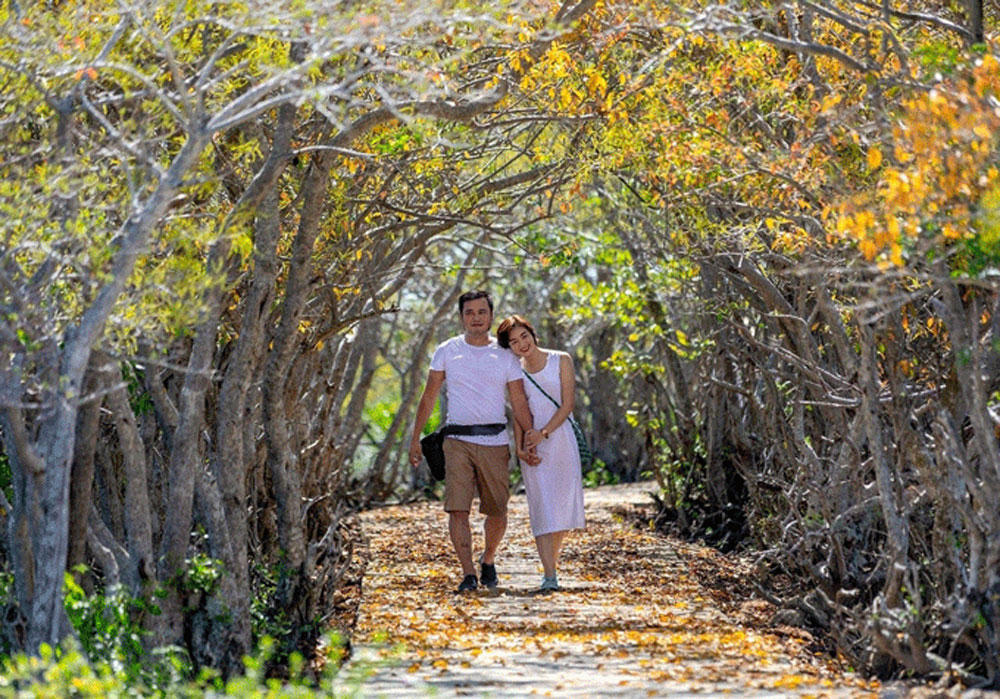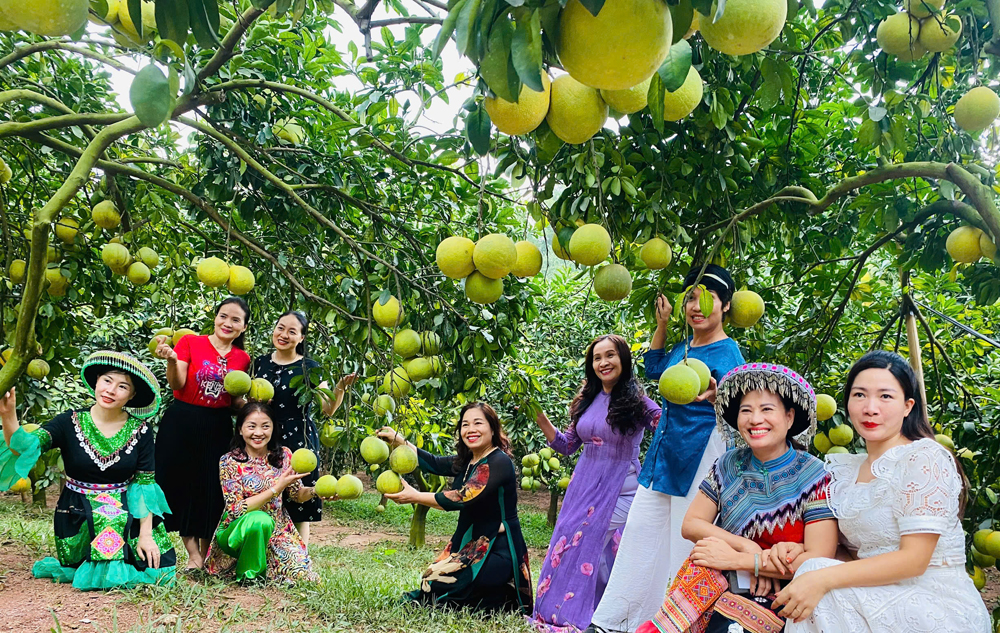Autumn yellows return to Ru Cha mangrove forest
Around 15 kilometers from downtown Hue, Vietnam’s former imperial capital, Ru Cha is a tiny islet on the Tam Giang Lagoon in the central province of Thua Thien-Hue. The islet was formed by large scale encroachments by locals that narrowed down the mangrove forest to its 5-hectare area today.
 |
|
An aerial photograph captures a magnificent color divide, with the yellow on one bank of the river or stream, green on the other, and blue of the water in between. |
Ru means forest and Cha is a tree species, so the name means a forest of Cha trees (excoecaria agallocha, a mangrove species) that used to grow densely in the area.
This five-hectare wonder is the only preserved primeval mangrove forest in Hue, still serving the dual function of preventing saline encroachment and mitigating storm impacts.
Apart from those who come to enjoy its beauty and take pictures, it also attracts environment researchers, for whom it is a valuable source of biodiversity.
 |
|
Visitors are usually surprised that the mangrove forest has just one couple living a makeshift dwelling for more than 30 years. |
In the middle of the islet, local authorities have constructed a five-meter tall watchtower from where the natural beauty of the place can be seen and photographs taken.
Large scale destruction of the forest for aquaculture (shrimp farming) and firewood exacted a heavy price in 1999, when a flood of historic proportions ravaged the area. Locals then learnt the importance of protecting the mangrove forest. Efforts to preserve what’s left of the primeval forest has seen the return of many bird species and its re-emergence as a stopover or destination for migrating birds.
 |
|
A couple walks on a concrete road leading to the forest. |
Inside the forest stands an ancient temple that worships the Thanh Mau Goddess. Locals organize a spirit possession ritual (hau dong) at the temple during the third lunar month, seeking her protection.
Visitors are usually surprised that the mangrove forest has just one couple living a makeshift dwelling. They have been living in Tam Giang Lagoon for more than 30 years. Meeting and spending time with them is a particularly enjoyable part of visiting this mangrove forest.
Source: VnExpress
 Bắc giang
Bắc giang















Reader's comments (0)